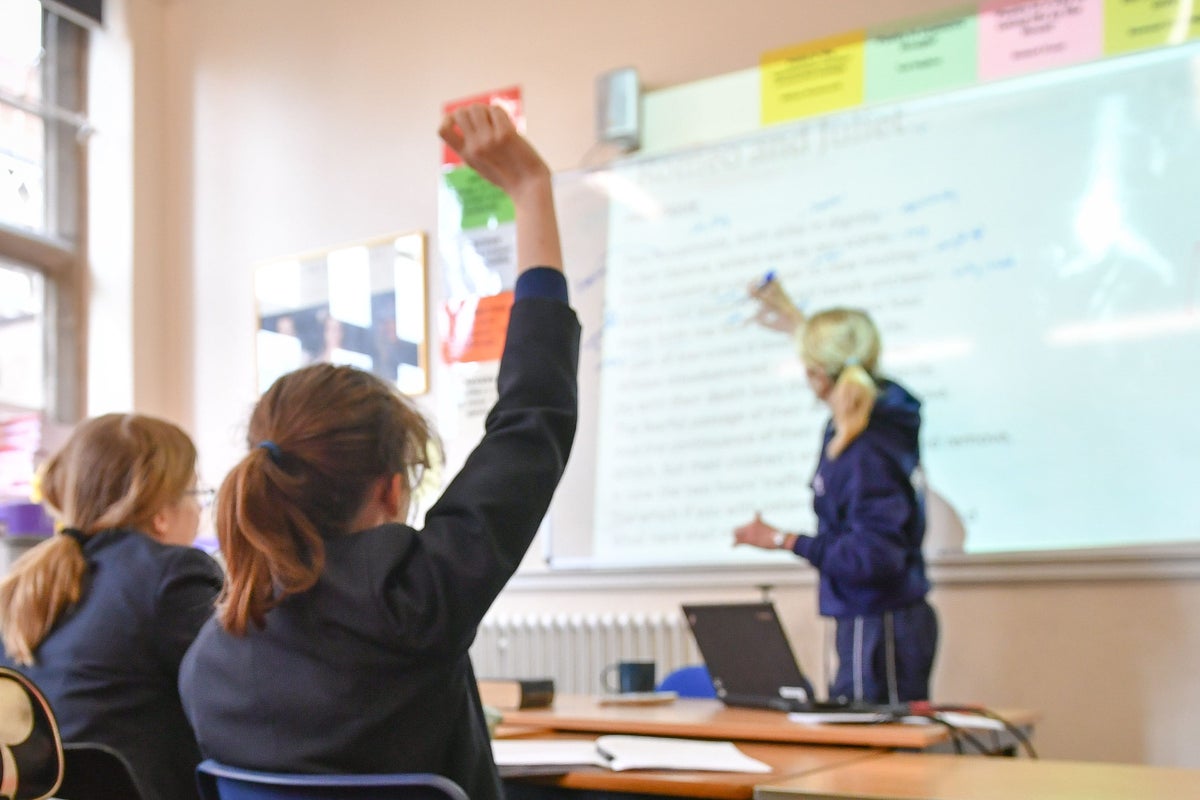
Design and technology pupils should be focusing on designing solutions to global challenges rather than creating products which often end up in landfill, one of the UK’s biggest education companies has suggested.
Pearson, which runs exam board Edexcel, is calling for the design and technology (D&T) curriculum to be reformed to reverse the decline in pupils’ uptake of the subject.
The company hopes a new curriculum would change the focus away from creating products that “could end up in landfill” and instead pupils help to create sustainable solutions to key global issues like climate change.
D&T students could look at challenges through the digital design of services, as well as through physical prototyping of products, Pearson has suggested.
The Department for Education (DfE) said it is considering further steps to incorporate sustainability and climate change into D&T and the curriculum.
It comes as a poll suggests that nearly half (47%) of secondary school teachers and leaders believe modernising D&T would benefit the curriculum.
It is a sensible idea to shift the focus of design and technology to sustainable solutions— Julie McCulloch, Association of School and College Leaders
A survey by the Teacher Tapp app, of 2,295 secondary school teachers and leaders in England in January, found that half would support the move to D&T addressing global challenges like climate change (51%) and preparing students for designing in a digital future (49%).
Sharon Hague, Pearson’s senior vice president of UK Schools, said: “Design and Technology has provided decades of valuable skills to young people, however, in the face of continued national decline in take up of the subject alongside rising costs associated with the current workshop infrastructure and a shrinking teacher workforce, it is no surprise that many people are supporting change.”
She added: “While making will still be a key part of design education, our proposed new curriculum would also put a focus on designing for the planet, with learners challenged to help create sustainable solutions to key global issues like climate change and creating fewer products that could end up in landfill.
“This could be through the physical prototyping of products and spaces, but also through the digital design of services, infographics, apps, websites, marketing campaigns, laws, social movements, and more.”
Pearson’s call for a change to the D&T curriculum has been supported by a number of organisations, including Google, the Ellen MacArthur Foundation, the Design Council, and Let’s Go Zero.
Minnie Moll, chief executive of the Design Council, said: “Studying design at school is a crucial talent pipeline, our research shows that seven in ten of today’s 1.97 million people working in design studied it at GCSE level.
“The decade-long decline in students studying the subject presents a major and urgent risk to the sector’s future.
“We must inspire the next generation of designers if the UK is to become a thriving green economy.”
Julie McCulloch, director of policy at the Association of School and College Leaders (ASCL), said: “Design and technology is a subject that has been neglected by the government over many years, with it being sidelined in school performance measures that favour traditional academic subjects.
“This has contributed to a worrying drop in the number of pupils taking a subject that is crucial for learning about technology and innovation.
“It is a sensible idea to shift the focus of design and technology to sustainable solutions.
“This is an area young people are showing great interest in and is where future innovation must lie both in terms of the UK economy and the good of the world.
“It is clearly early days in developing this new approach, but it is important that it is made explicitly clear what is meant by ‘design solutions that address global issues’ and exactly what the subject will comprise.”
A DfE spokesperson said: “Design and technology can teach young people vital practical skills while inspiring their creativity.
“We are considering further steps to incorporate sustainability and climate change into the subject and the wider curriculum to help to equip students for a green future.”







